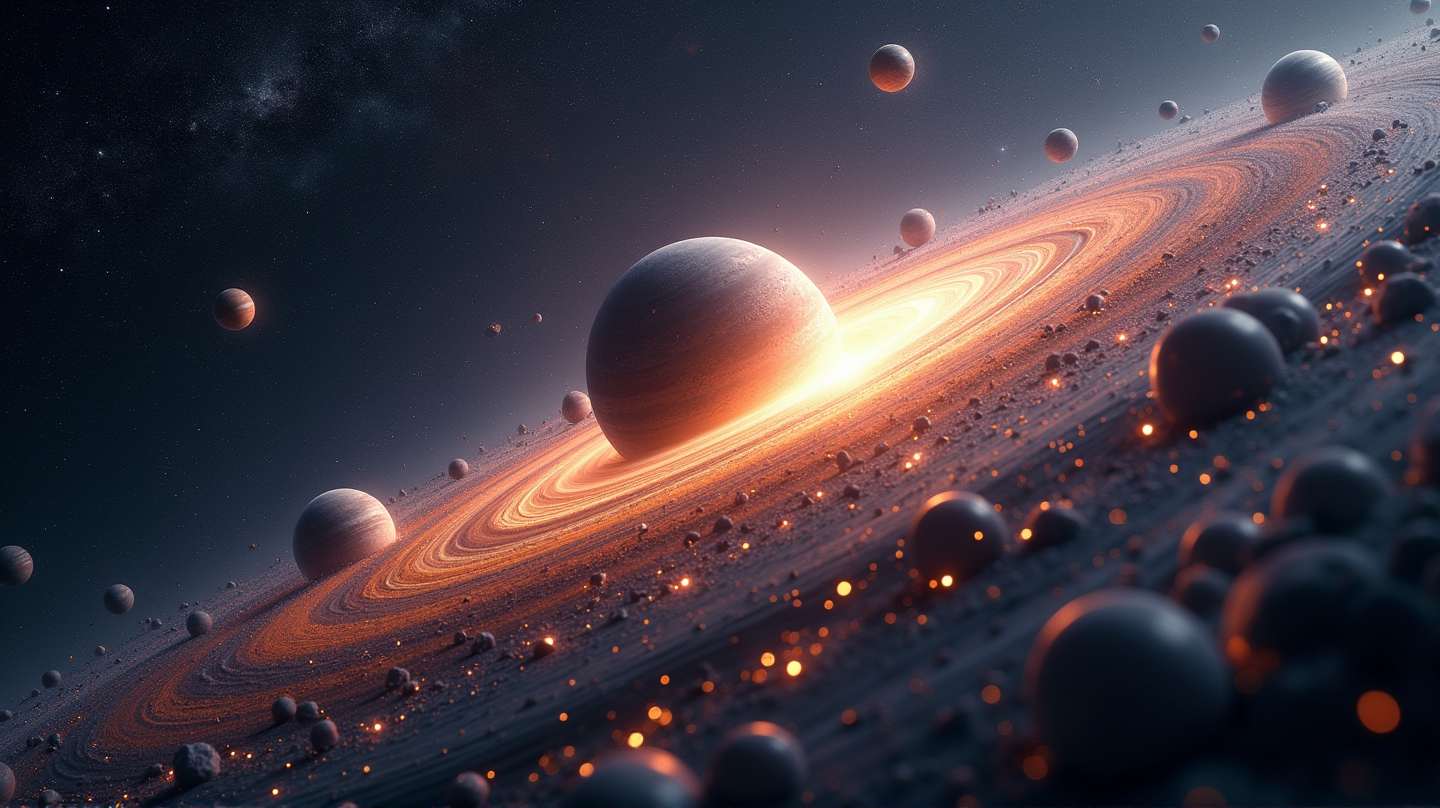Astronomers Unveil the Dance of Exoplanets: A Carousel in the Stars
Scientists discover two exoplanets in a previously empty system, orbiting their star in a carousel-like rhythm that challenges cosmic conventions.

Imagine a cosmic dance unfolding in the far reaches of space, where two exoplanets orbit their star in a rhythm akin to a nostalgic carousel ride. A thorough reanalysis of Kepler telescope data has revealed this enchanting dance in a planetary system that was once deemed empty.
A Decade-Old Mystery Unraveled
A decade ago, the Kepler telescope logged a series of brightness fluctuations around the star KOI-134, which were originally dismissed as false positives. Thanks to NASA’s policy of open data access, these findings were re-evaluated, uncovering two incredible worlds — KOI-134 b and KOI-134 c.
The Wobbling Duo: An Eccentric Orbit
KOI-134 b, a warm Jupiter-like planet, exhibits delayed or premature transits due to gravitational interactions with its smaller neighbor, KOI-134 c. This interaction not only causes a significant drift — up to 20 hours — in transit times but also gives this system its charming carousel analogy: each planet rides its orbit with a merry-go-round’s jovial motion.
The Dance of Inclines and Resonance
These exoplanets perform a dance with orbital planes differing by 15 degrees. Despite this celestial tilt, their movements sync in a 2:1 resonance. KOI-134 c completes two orbits for every one orbit by KOI-134 b. This harmonic convergence adds a musical note to the planets’ waltz around their star, akin to an orchestrated movement of wooden ponies bobbing in sync.
A Scientific Lesson in Revisiting Old Data
The discovery of KOI-134’s unusual planetary setup is a testament to the unforeseen wonders nestled in old data, waiting to be rediscovered with new eyes and modern techniques. Such breakthroughs not only enrich our understanding of celestial mechanics but also challenge the boundaries of astronomical conventions.
The Legacy of an Unseen Carousel
This marks KOI-134 as the first known system with such remarkable mutual orbital inclinations. According to NASA, this discovery underlines the ever-evolving nature of our cosmic curiosity and the boundless potential of space exploration, opening doors to further explorations in our galaxy’s uncharted territories.
The universe, vast and enigmatic, beckons us with tales of the extraordinary, waiting to be seen through the lens of perseverance and innovation.
As reported by Universe Space Tech

